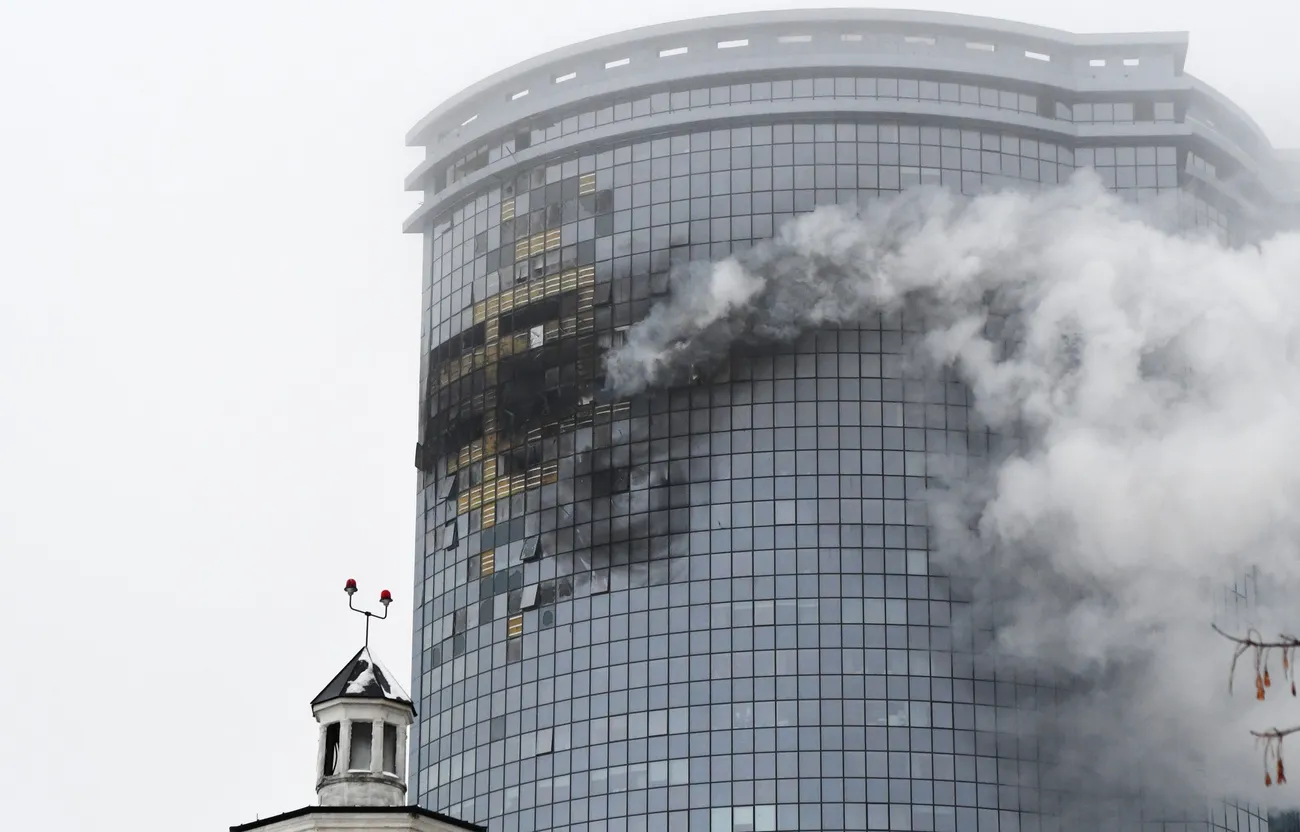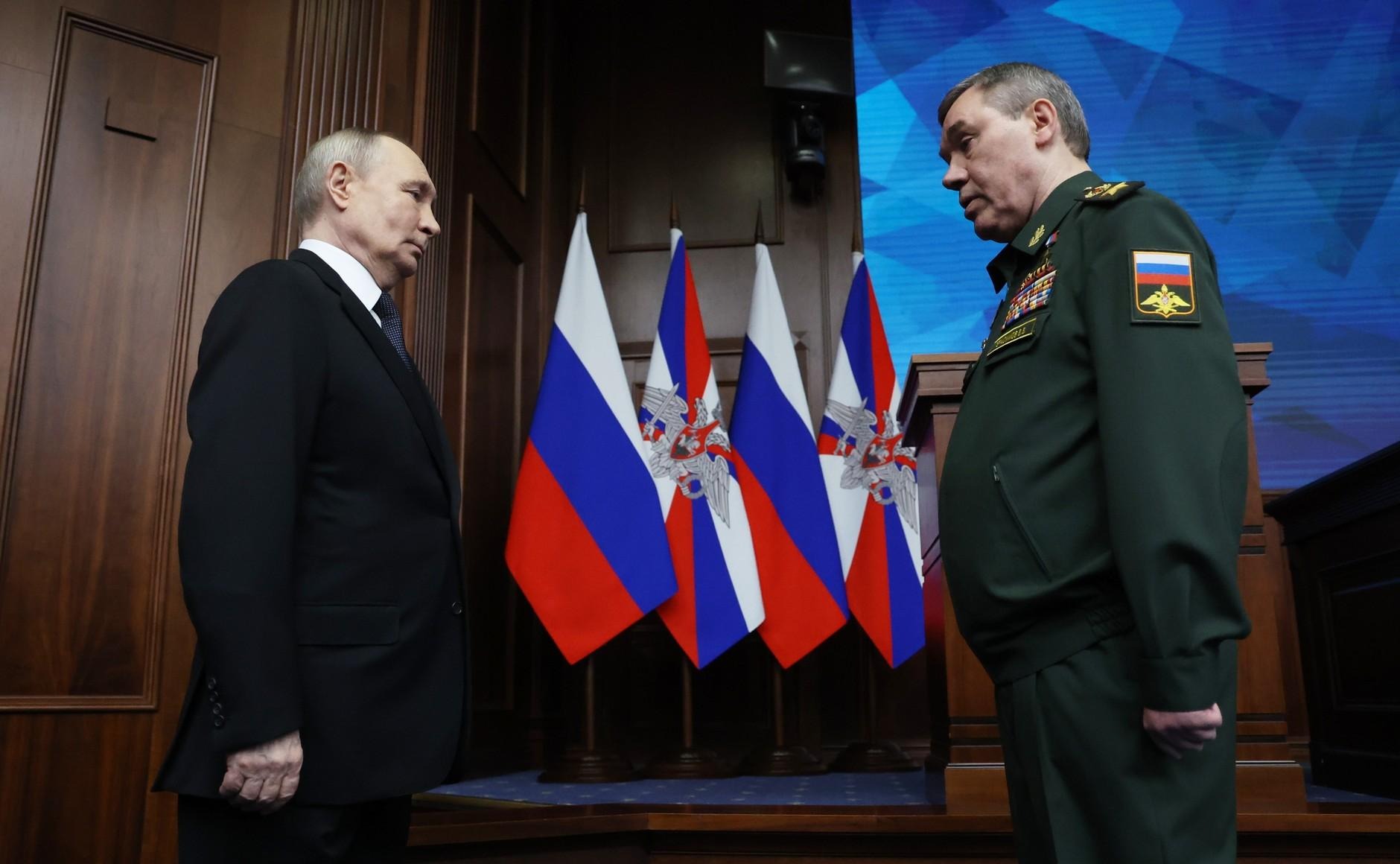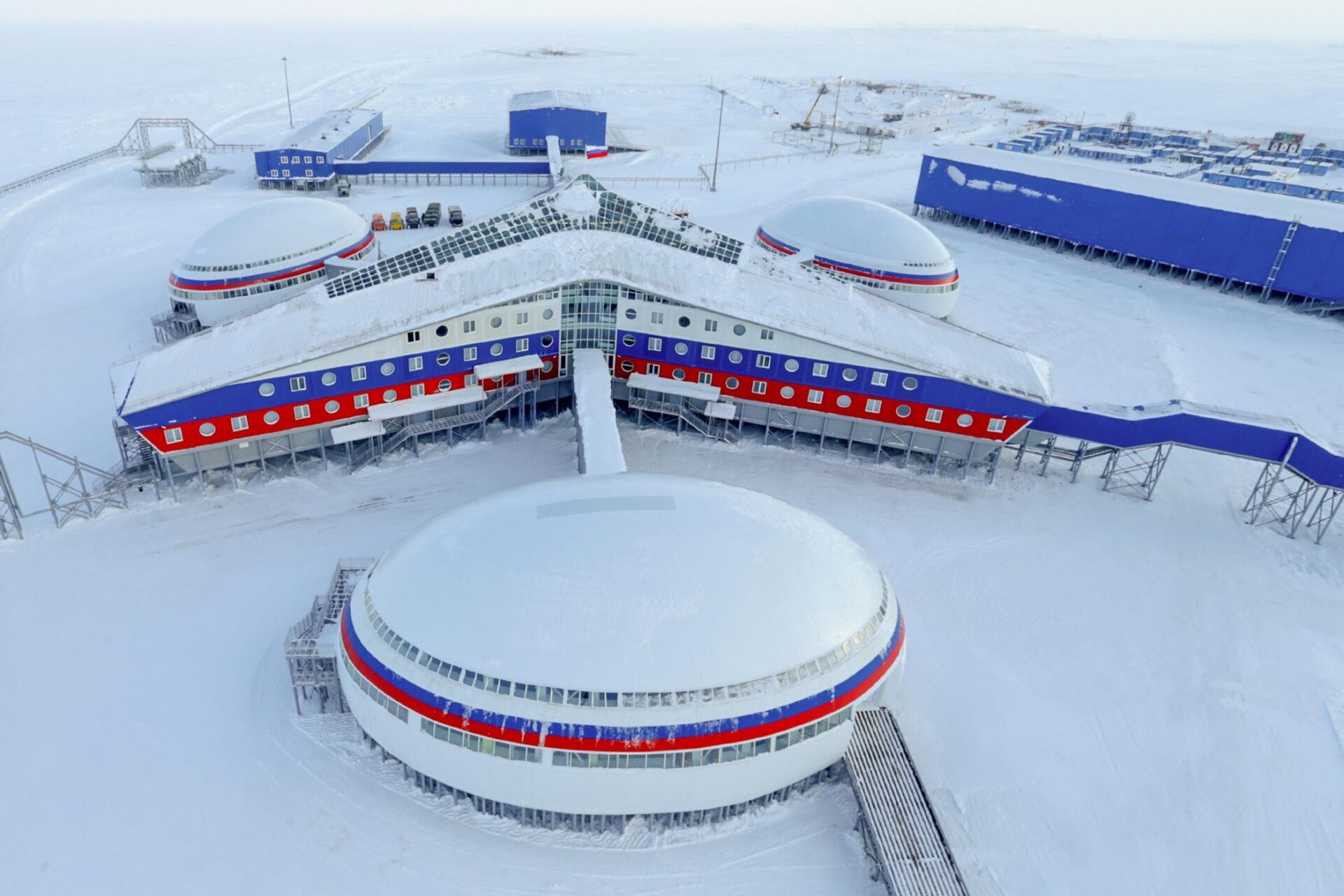
Ukraine Brings War Home to Russia
Ukraine Brings War Home to Russia
Executive Summary:
- On February 3, the Security Service of Ukraine (SBU) targeted paramilitary leader Armen Sarkisian in Moscow, illustrating Ukraine’s strategy to actualize the war for the removed Russians.
- Through assassinations, the operation into Kursk oblast, and drone warfare, Ukraine alarmed everyday citizens who until that point were able to disassociate themselves from the atrocities happening across their borders.
- By spreading panic and frustration, the Russian President Vladimir Putin’s regime increasingly faces the risk of instability within Russia.
On the morning of February 3, an explosion ripped through the northwest Moscow “Scarlet Sails” 29-story apartment complex, killing one person and injuring another four (RIA Novosti, February 3). The target of the attack was most likely paramilitary leader Armen Sarkisian, who was also killed in the explosion. According to the Telegram news publication Shot, Sarkisian was taken to the intensive care unit of the Botkin hospital after the attack and died without regaining consciousness after shrapnel penetrated his heart (Rambler.ru, February 3). Following the explosion, Ukrainian President Volodymyr Zelenskyy, in an interview with British journalist Piers Morgan, did not deny that the Ukrainian Security Service (SBU) was involved when asked about the attack. He stated, “I know the [SBU] eliminated one person that stands behind killings of Ukrainians in the East of our state during the times of the Revolution of Dignity” (YouTube/@PiersMorganUncensored, February 4; Kyiv Post; Interfax-Ukraine, February 5). One of the risks for Russian President Vladimir Putin in launching the full-scale invasion was that the effects would rebound and cause problems within Russia, which appears to be the Ukrainian playbook (see EDM, April 25, 2024). The “Scarlet Sails” apartment complex was a symbolic target, as it is located in the same part of the city where the former pro-Kremlin Ukrainian President Viktor Yanukovych resides.
Although Ukrainian forces have since withdrawn from Kursk Oblast, the use of targeted assassinations in order to alarm everyday citizens is a tactic by which Ukraine has inflicted serious consequences for Moscow. Sarkisian’s death is unsurprising and comes as part of a clear tactical initiative by the Ukrainians to make the war real to Russians, primarily through assassinations, occupation, and drone attacks. Sarkisian has been on wanted lists since 2014 when he joined insurgents fighting against Ukraine. A figure of some notoriety in certain circles, he served as the chair of the Donetsk People’s Republic (DPR) boxing federation. He created the “Arbat” or “Armenian” volunteer battalion in Horlivka in 2022 at his own initiative and, in 2024, received an award from DPR leader Denis Pushilin. Arbat is a storm unit led by former Wagner fighter Hayk Gasparan, who was born in Nagorno-Karabakh and includes other former fighters of the Wagner private military company (PMC) (Lenta.ru, February 3).
Assassinations
One tactic pioneered by the SBU to bring the war into Russia has been the assassination of prominent Russians on Russian soil (Ukrinform, February 6, 2024). Two of the most notable assassinations have been the killings of Maxim Fomin, under the pseudonym Vladlen Tatarsky, in a St. Petersburg café in April 2023 and the murder of Darya Dugina in August 2022 (see EDM, October 8, 2022, April 20, 2023). Tatarsky was killed while giving a public lecture when Daria Trepova, a former anti-war activist, handed him a bust of himself, which was packed with explosives. Dugina was killed by a car bomb, which many analysts believe to have been aimed at her notorious father, “philosopher” Aleksander Dugin (Radio Svoboda, October 23, 2024). While some analysts speculate that the Kremlin may have been happy to allow Ukraine to blacken its name in the eyes of the West by targeting civilians with these earlier strikes, Sarkisian was surely a valid target due to his high-profile military involvement. Thus, rather than a continuation of a prior campaign, the recent assassinations target individuals directly involved in Russia’s military.
The closest earlier parallel occurred when Stanislav Rzhitsky, a former Russian submarine officer and head of the mobilization department in the southern city of Krasnodar, was shot dead in July 2023 while out jogging in a local park. Rzhitsky was shot near the Olympic sports complex early in the morning, and the killer left valuable items at the scene, including his smartwatch and phone, indicating a premeditated murder (RBC, July 11, 2023). Furthermore, Rzhitsky was listed in the Ukrainian Myrotvorets (Миротворець) database as being responsible for firing Kalibr missiles at the Ukrainian city of Vinnytsia (Myrotvorets, July 15, 2023). Myrotvorets catalogs the names of all Russians killed in the war and does not differentiate between those killed inside and outside of the nominal battlespace. The presence of such a source ensures Russian military personnel do not remain anonymous following their deaths.
The number and frequency of presumed SBU assassinations in recent times have caused alarm. Along with the murder of Sarkisian described above, another important Russian military figure was killed on December 17, 2024. General Igor Kirillov, the head of the Chemical, Biological, and Nuclear Defense Troops of the Russian Armed Forces, and his assistant Ilya Polikarpov were killed by an improvised explosive device planted in a scooter. The following day, the investigative committee pinned the blame on a 29-year-old Uzbek citizen who had been recruited by the SBU (RBC, February 3). The growing number of high-profile assassinations on Russian soil has caused some alarm in Russian society about a “fifth column” inside the country, ostensibly recruited on social media by foreign agents. A report from April 2024 discussed how Russian customs intercepted a “large shipment of customs in the Pskov region” (Izvestiya, April 4, 2024). It contained several bombs, guns, and plastic explosives hidden inside icons- reportedly enough to blow up a high-rise building. The “very presence of such cargo,” the report continues, “indicates the presence of an extensive and complex network of SBU agents on the territory of the Russian Federation.” The report goes on to allege that British specialists train agents to find people willing and capable of carrying out attacks inside Russia, plausibly including some of the cases mentioned above (Izvestiya, April 4, 2024). As if to make this point, on February 7, the Russian Security Service (FSB) arrested four women in Sevastopol, Rostov-on-Don, and Voronezh who were allegedly trained by the SBU to handle light weapons and explosives and were preparing “terrorist acts” against Russian officers and government officials (Komsomolskaya Pravda, February 7).
Altogether, Ukrainians compose a large diaspora from multiple origin points inside Russia, which is potentially ready for recruitment by the SBU. The United Nations reports that the largest number of Ukrainian refugees, some 2.8 million, fled to Russia, with some reports placing the number at 5.3 million (Izvestiya, February 20, 2023). Furthermore, a large number of Ukrainians were living in Russia even before the outset of Russia’s full-scale invasion (Kyiv Post, February 18, 2024). While it is extremely difficult to know the veracity of claims that Ukrainians living in Russia may be working with the SBU, the panic and heightened sense of insecurity it presumably creates among ordinary Russians does logically follow.
Occupation
Ukraine made headlines around the world when it sent an incursion into Russia’s Kursk oblast, marking the first time since World War II that a foreign power had invaded Russian soil. Although Ukraine has now withdrawn, the symbolic effects of the incursion remain. While the Russian populace initially reacted with indifference to the invasion, and the regime only devoted a few conscripts and fighters to repel the invasion, recent indications have been that the population is becoming more vocal in its opposition (see EDM, August 14, 2024). Incidentally, Sarkisian’s “Arbat” battalion was also sent to Kursk oblast in August 2024 (Lenta.ru, February 3).
Predictably, Russian refugees displaced from Kursk oblast have been protesting the government’s inadequate provision of public services. Around 150,000 people were forced to flee their homes by the Ukrainian incursion, and the Russian government appeared to be having problems providing the appropriate assistance. On Sunday, November 10, 2024, several dozen people rallied in front of the government building in Kursk to protest a lack of compensation for housing, resulting in the firing of a local official (The Moscow Times, November 12, 2024). The panic caused by the invasion has spread to other regions, and now the Belgorod, Kursk, and Bryansk oblasts (with a population of approximately 3 million) are currently under a special Counter-Terrorism Operation regime, where rights are further restricted (Kommersant, November 10, 2024). This is a sizable group of individuals directly affected by Ukraine’s incursion into Russian territory, with the ripple effects to connected friends and family, presumably, being much larger.
Drone Attacks
The Ukrainian Armed Forces’ drone attacks have been used to great effect both on the battlefield and to actualize the war for Russians far removed from the fighting (see EDM, October 8, 16, 24, November 13, 2024). The Russian city of Kazan, for example, was the subject of a massive drone attack in December 2024, though drone attacks have been ongoing there since April 2023. Reports suggest that as many as eight drones attacked residential buildings, and two drones crashed into the “Azure Heavens” tower. Another two drones crashed into the “Manhattan” tower. The panic led the government to close the airport and schools in Kazan and encouraged children to seek shelter in safer places, including the subway. Despite the drones causing no recorded fatalities, there were numerous reports of injuries, mostly from broken glass (Meduza, December 21, 2024). Moscow has also experienced high-profile drone attacks, with some 30 drone attacks being recorded since the beginning of May 2023. This included the city being targeted along with seven other regions in a large attack on August 30, 2024 (RBC, March 14).
The largest drone attack thus far occurred on March 11 as authorities reported more than 330 unmanned aerial vehicles were downed across a number of areas inside Russia including Moscow Oblast, Kursk Oblast, Bryansk Oblast (Kyiv Independent, March 11). In January 2025 alone, one source reported drone attacks in the Leningrad, Smolensk, Kursk, Voronezh, Rostov, Saratov, Tambov, Bryansk, Volgograd, Kaluga, Tula, Nizhny Novgorod, and Oryol oblasts, the Republic of Tatarstan, and Krasnodar krai. A total of 1,141 drones were launched in these attacks, striking four oil depots, four gas stations, four oil refineries, three aircraft repair plants, five factories, two airfields, two ports, and one drone depot (24tv.ua, February 7). The whir of Ukrainian drones is becoming a constant feature of life in Russia, exemplified by recent attacks that caused the closure of Volgograd and Saratov airports (Kommersant, March 23).
The actual combat damage inflicted by these drone attacks cannot be called significant—they are too small and carry light munitions, which suggests inflicting damage is not necessarily their main goal. Some may be particularly well-positioned to deliver spectacular, costly fires, particularly those that aim to ignite already stationary fuel sources, such as the country’s oil industry. The analysis of these tactics, however, focuses on a potentially more vulnerable Russian weakness—morale among the domestic population. The sense of panic the drones induce in cities that previously considered themselves too far from the front lines to be viable targets is very effective.
Conclusion
Ukraine’s campaign to bring the war home to ordinary Russians has caused public discontent with the policies of the current regime. This is coupled with the demonstrative rise in xenophobia brought about as a result of the terrorist attack at Crocus City Hall in Moscow in March 2024 and an anti-migrant campaign that saw a raid on a martial arts club in St. Petersburg in February, as well as the alleged recruitment of Central Asians by the SBU in their sponsoring of attacks in Russia (see EDM, March 28, April 1, 2024; Saint-petersburg.ru, February 8). Not to mention the threat from PMCs to regime and social stability or the ever-volatile North Caucasus (see EDM, March 27, April 2, 2024). Putin’s regime may not care much about the actual suffering of ordinary people within Russia, but the specter of people spilling onto the streets in protest, similar to the last days of the Soviet Union, is reportedly Putin’s nightmare (see EDM, April 16, July 30, 2024). This may also be a move by Ukraine to secure a better negotiating position before any talks begin in earnest, but it could have much wider consequences. In a meeting with the regional governor, Putin described the situation in Kursk oblast as “very difficult” (Rambler.ru, February 5). By invading Ukraine in the manner he has done, Putin may have let the genie of discontent in Russia out of the bottle.


